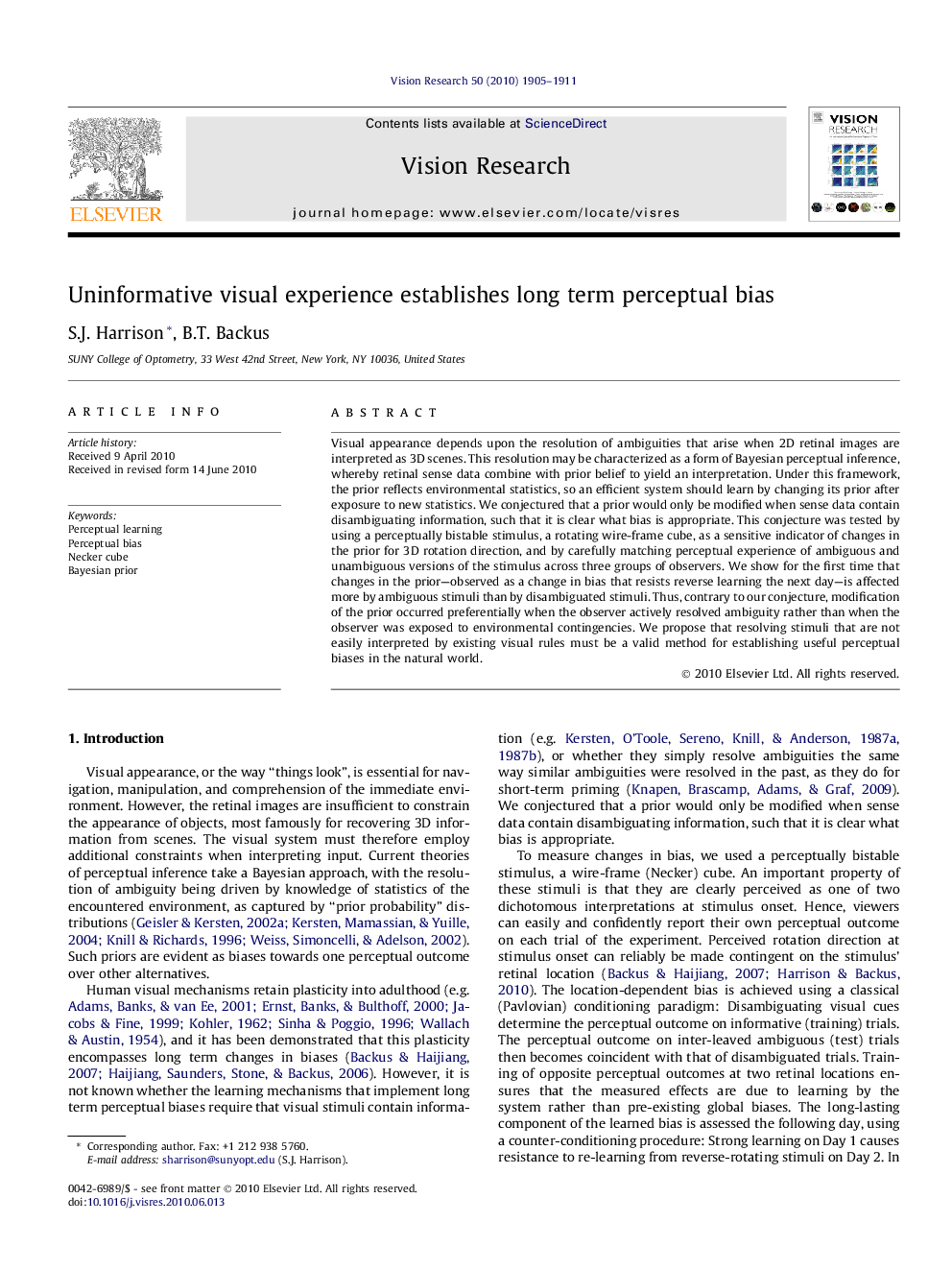| Article ID | Journal | Published Year | Pages | File Type |
|---|---|---|---|---|
| 4034563 | Vision Research | 2010 | 7 Pages |
Visual appearance depends upon the resolution of ambiguities that arise when 2D retinal images are interpreted as 3D scenes. This resolution may be characterized as a form of Bayesian perceptual inference, whereby retinal sense data combine with prior belief to yield an interpretation. Under this framework, the prior reflects environmental statistics, so an efficient system should learn by changing its prior after exposure to new statistics. We conjectured that a prior would only be modified when sense data contain disambiguating information, such that it is clear what bias is appropriate. This conjecture was tested by using a perceptually bistable stimulus, a rotating wire-frame cube, as a sensitive indicator of changes in the prior for 3D rotation direction, and by carefully matching perceptual experience of ambiguous and unambiguous versions of the stimulus across three groups of observers. We show for the first time that changes in the prior—observed as a change in bias that resists reverse learning the next day—is affected more by ambiguous stimuli than by disambiguated stimuli. Thus, contrary to our conjecture, modification of the prior occurred preferentially when the observer actively resolved ambiguity rather than when the observer was exposed to environmental contingencies. We propose that resolving stimuli that are not easily interpreted by existing visual rules must be a valid method for establishing useful perceptual biases in the natural world.
